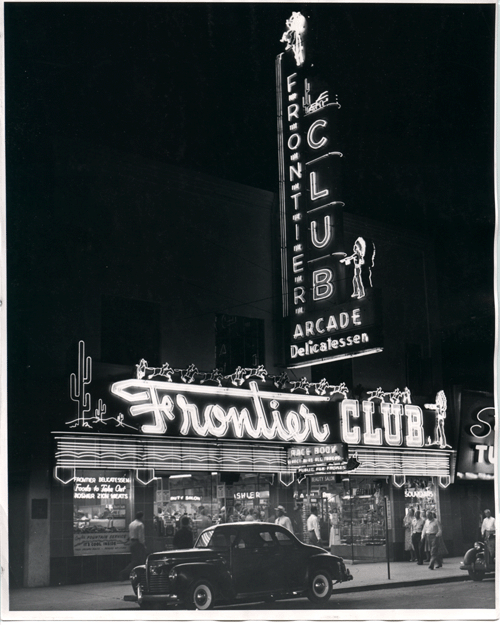The Four Queens (western corner)
This was originally the location for White Cross Drugs. It became White Cross Rexall in the early 1960s. There was a soda fountain in the Drugstore as well. Wayne Newton, when still a teenager and performing with his brother Jerry at the Fremont Hotel, would leave the Fremont and have a soda at White Cross until his next set. Next to White Cross was Bentley's Trading Post and Mode O'Day Womens Fashions.There was a hotel on the second floor above Mode O'Day. Skaggs Drug Store with its neon signage, MJ Christensen Jewelers, Bain's Ladies Fashion. Smith and Chandler Western Wear moved from Second and Fremont, to next to Bain's.
In 1964, the 4 Queens bought the property and construction began on the new hotel and casino. White Cross moved south down Las Vegas Blvd to its current location at Oakey. Ben Goffstein was the majority owner and named the Four Queens after his four daughtersWhen it opened it only had 120 rooms and 20,000 square feet of casino.
The owners of the 4 Queens bought out Bentley's and Mode O'Day and built the 4 Kings Arcade where school kids could be found after school and on the weekends playing pinball and such.
The Eastern corner of what is now the 4 Queens was City Drug which was owned by Frank Bolig. I'm not sure why there were three drug stores on this block but Drug Stores were very popular on Fremont with the Las Vegas Pharmacy at First and Fremont for over fifty years. Further east on Fremont, near Seventh Street was Fremont Drugs as well.
The Las Vegas Pharmacy was torn down and is today Mermaids. Where Fremont Drugs stood is now a Cuban Restaurant.
In 1972, the 4 Queens built a tower that sits back off Fremont Street and used the same motif as the original building.
In 1975, they annexed all the businesses and expanded down to the eastern corner.
They also held an exhibit in 1975 of reproductions of the famed Crown Jewels of England which included a knighting sword, the Orb of England and the Imperial State Crown.
Today, the Four Queens takes up the entire block on Fremont Street and goes back all the way to Carson Street.
Four Queens











